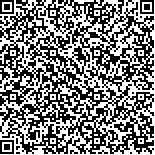| 引用本文: | 巢波,蔡永久,徐宪根,李明宝,胡国仲.基于水质荧光指纹法的湖泊污染溯源研究——以太湖流域滆湖为例.湖泊科学,2023,35(4):1330-1342. DOI:10.18307/2023.0425 |
| Chao Bo,Cai Yongjiu,Xu Xiangen,Li Mingbao,Hu Guozhong.Traceability of lake pollution based on aqueous fluorescence fingerprint method: A case study of Lake Gehu, Taihu Basin. J. Lake Sci.2023,35(4):1330-1342. DOI:10.18307/2023.0425 |
|
| |
|
|
| 本文已被:浏览 4237次 下载 2620次 |

码上扫一扫! |
|
|
| 基于水质荧光指纹法的湖泊污染溯源研究——以太湖流域滆湖为例 |
|
巢波1,2, 蔡永久3, 徐宪根1,3, 李明宝1, 胡国仲2
|
|
1.常州市环境科学研究院, 常州 213022;2.江苏省环保集团有限公司, 江苏常环环境科技有限公司, 常州 213000;3.中国科学院南京地理与湖泊研究所, 流域地理学重点实验室, 南京 210008
|
|
| 摘要: |
| 随着社会经济和城市化进程的快速发展,湖泊水环境污染问题日益突出,加剧了湖泊原有功能的退化和丧失,因此污染治理成为了湖泊功能恢复和可持续发挥的必要条件,但如何实现污染精准溯源又是污染治理的重要前提。为此,本文以太湖流域滆湖为例,采用一种新兴技术--水质荧光指纹法开展湖泊污染溯源。于2021年累计采集滆湖周边70个农业、13个生活、3个企业排口的瞬时出水构建污染源荧光指纹库,连续12个月采集滆湖湖体8个样点水样分析水体荧光组分。通过平行因子分析共解析出4种污染源指纹和滆湖5种水体组分,经荧光相似度(塔克同余系数)分析进一步明确滆湖主要受到种植业面源、生活源和工业源的影响。此外,荧光强度与叶绿素a浓度和藻密度的强相关性表明藻类繁殖活动也会影响滆湖。从不同污染源对滆湖的时空影响特征来看,种植业面源主要在春、夏季影响西部、中部水域,生活源主要在夏、冬季影响西部、北部水域,工业源主要在特定月份(3-4月、10-12月)影响西部水域,藻类繁殖活动主要在夏季影响湖体。通过荧光组分与水质参数的时空相关性分析得到农业源和总磷、总氮,生活源和氨氮、有机物参数(BOD5、CODCr、CODMn),藻类繁殖活动和Chl.a、藻密度,工业源和Cu、Zn分别呈现出强相关性,表明荧光指纹法在水质溯源方面也有一定潜力。研究结果既可为滆湖当地的环境管理部门提供有价值的污染源信息,也可为其他湖泊开展污染溯源工作提供技术参考。 |
| 关键词: 水污染溯源 滆湖 水质荧光指纹法 污染源类型 污染源时空影响特征 时空相关性 |
| DOI:10.18307/2023.0425 |
| 分类号: |
| 基金项目:国家自然科学基金项目(52070023,U2240208)、国家水体污染控制与治理科技重大专项(2017ZX07301-001-05)和江苏省常州市科技支撑计划项目(CE20205037)联合资助。 |
|
| Traceability of lake pollution based on aqueous fluorescence fingerprint method: A case study of Lake Gehu, Taihu Basin |
|
Chao Bo1,2, Cai Yongjiu3, Xu Xiangen1,3, Li Mingbao1, Hu Guozhong2
|
|
1.Changzhou Academy of Environmental Science, Changzhou 213022, P. R. China;2.Jiangsu Environmental Protection Group Co., Ltd, Jiangsu Changhuan Environmental Technology Co., Ltd, Changzhou 213000, P. R. China;3.Key Laboratory of Watershed Geographic Sciences, Nanjing Institute of Geography and Limnology, Chinese Academy of Sciences, Nanjing 210008, P. R. China
|
| Abstract: |
| With the rapid development of social economy and urbanization process, the problems of water environmental pollution is become increasingly prominent for lakes, aggravating the degradation and loss of the original lake functions. Therefore, pollution control has become a necessary condition for the restoration and sustainable development of lake functions. However, how to accurately identify the sources of pollution is an important prerequisite for pollution control. For this purpose, this paper takes Lake Gehu as an example, and adopts an emerging technology called aqueous fluorescence fingerprint method to trace the sources of lake pollution. In 2021, the water instantaneously drained off from 70 agricultural, 13 domestic and 3 industrial outfalls around Lake Gehu was collected to build the fluorescence fingerprint database of pollution sources. The lake water samples at 8 sites were collected for consecutive 12 months as the analysis samples of fluorescent components of Lake Gehu. Through parallel factor analysis, 4 kinds of pollution source fingerprints and 5 kinds of fluorescent components were obtained. Based on fluorescence similarity (Tucker Congruence Coefficient) analysis, it was further determined that Lake Gehu was mainly affected by the cropping non-point pollution source, domestic pollution source, industrial pollution source. In addition, strong correlation among fluorescence intensity, chlorophyll-a concentration and algal density indicated that the algal reproduction activity could also make an impact on Lake Gehu. From the perspective of spatio-temporal characteristics in the impact of different pollution sources on Lake Gehu, the cropping non-point pollution source mainly affected the western and central regions of Lake Gehu in spring and summer. The domestic pollution source mainly affected the western and northern regions of Lake Gehu in summer and winter. The industrial pollution source mainly affected the western region of Lake Gehu in specific months (March to April, October to December). The algal reproduction activity mainly affected Lake Gehu in summer. The result of spatio-temporal correlation analysis among fluorescent components and water quality parameters showed that the cropping non-point pollution source and total nitrogen, total phosphorus, the domestic pollution source and ammonia nitrogen, organic matter parameters (BOD5, CODCr, CODMn), the algal reproduction activity and chlorophyll-a, algal density, the industrial pollution source and Cu, Zn showed strong correlations respectively, indicating the aqueous fluorescence fingerprint method had the potential to become a reliable tool in tracing pollution sources of water quality for lakes. The research results can provide not only valuable pollution source information for local environmental management department of Lake Gehu, but also technical reference for other lakes to carry out research on traceability of pollution. |
| Key words: Traceability of water pollution Lake Gehu aqueous fluorescence fingerprinting method types of pollution sources spatio-temporal impact characteristics spatio-temporal correlation |
|
|
附件
|
|